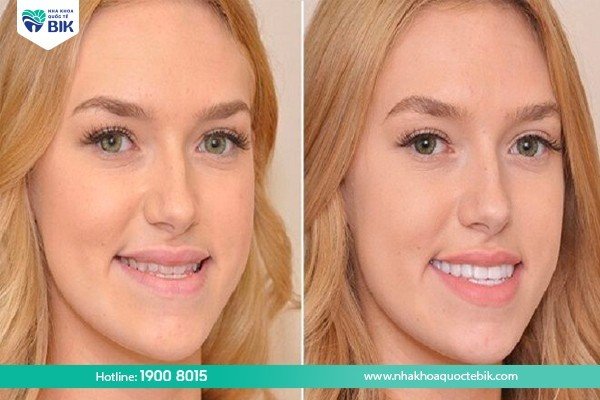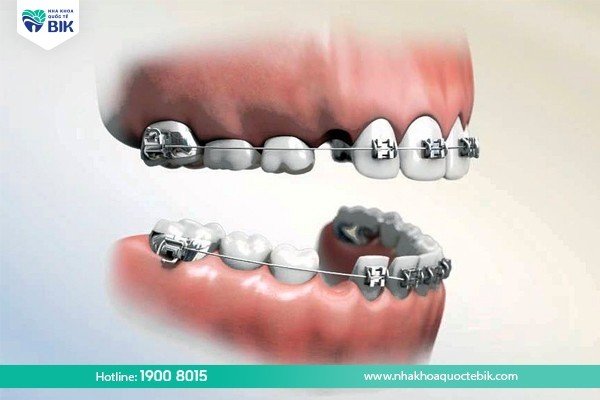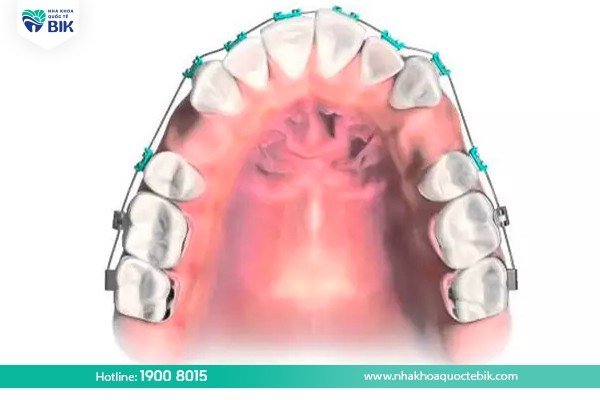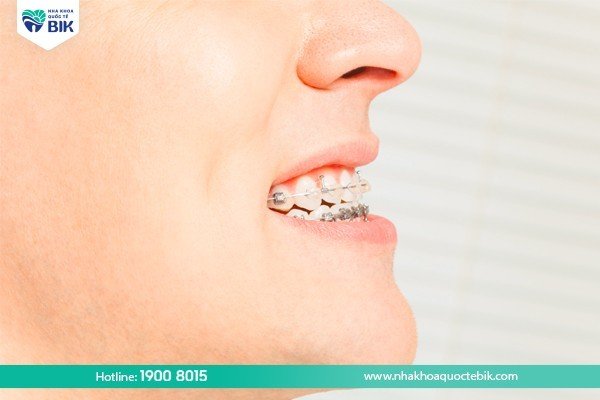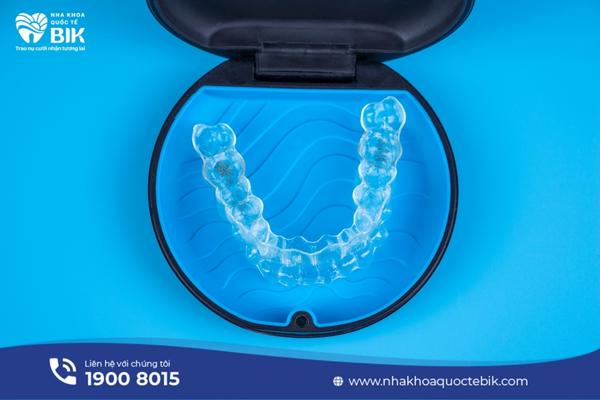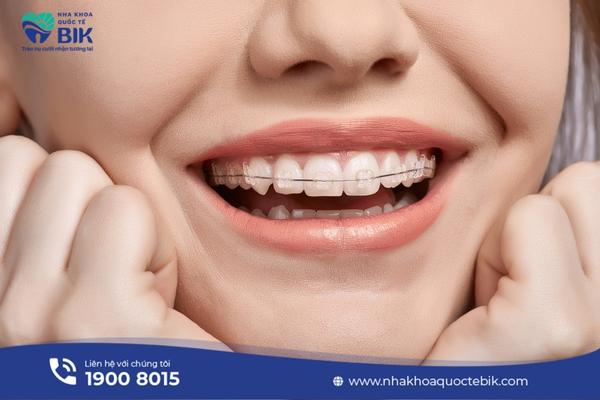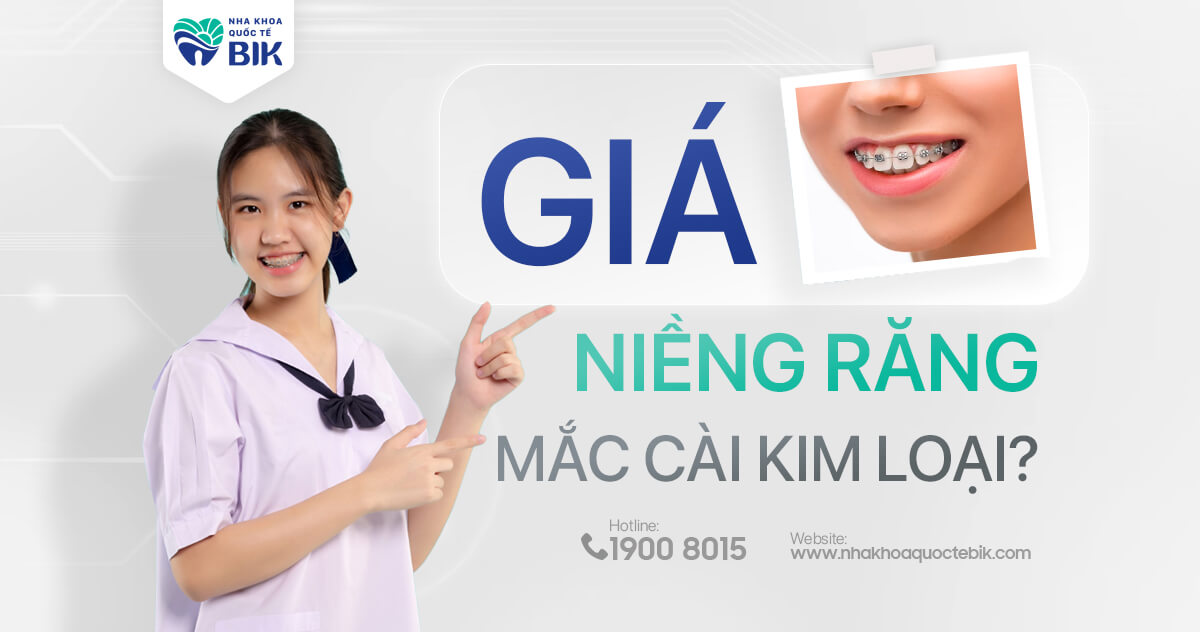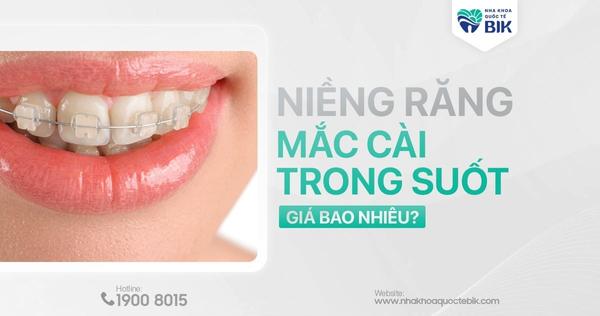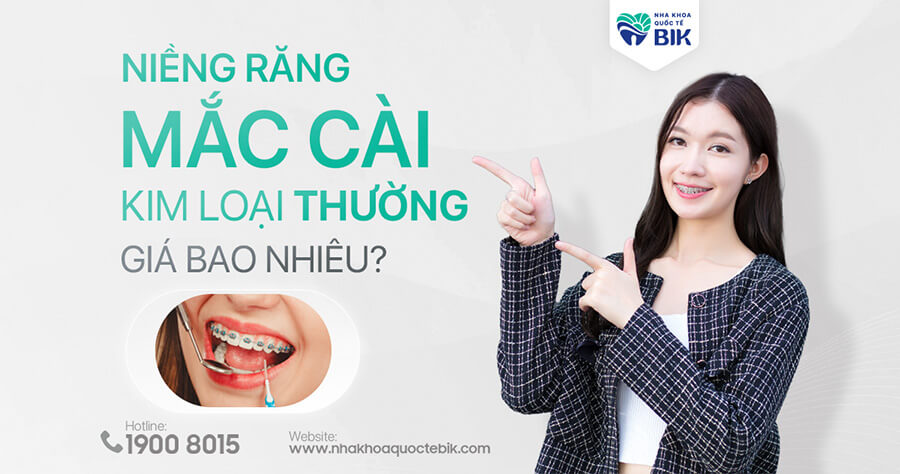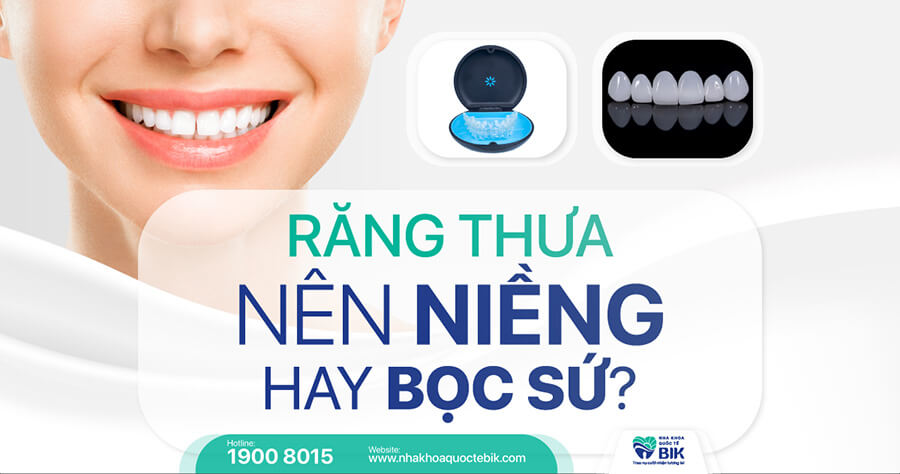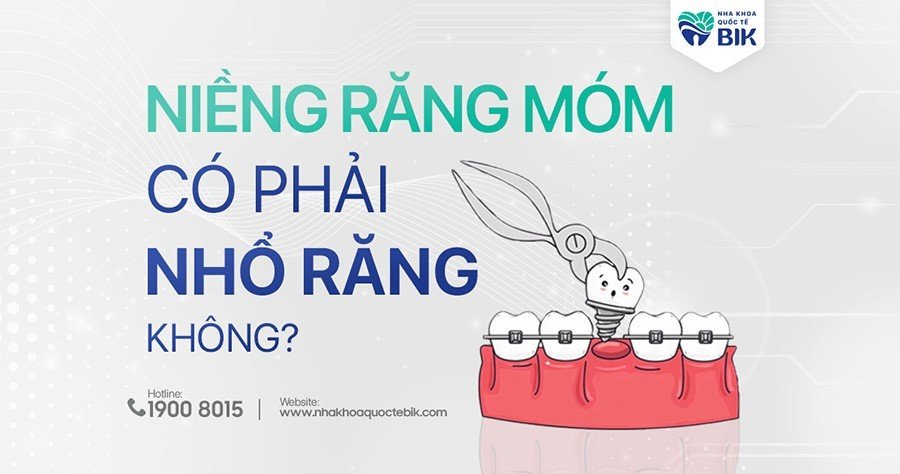
The purpose of tooth extraction when performing orthodontics is to create enough space on the jaw to help the teeth have space to move to the desired position according to the doctor’s treatment plan. However, whether braces for buck teeth require tooth extraction or not depends on each specific case. If the teeth are not extracted, the doctor will take other measures to ensure orthodontic effectiveness.
1. What are the signs of buck teeth?
Bow teeth, also known as reverse bite, is a form of misaligned bite between the two jaws. Although the teeth still develop normally, when the mouth is closed, the lower jaw will cover the upper jaw. At this time, the chin also protrudes forward, making the face lack harmony.
According to experts, buck teeth can be divided into 3 types:
– Buck teeth due to teeth: The jaw bone develops stably and normally, but the upper jaw teeth are recessed inward, the lower jaw teeth are protruded outward, causing loss of aesthetics.
– Buck teeth due to jaw bone: At this time, the teeth grow in the correct position, but the upper jaw bone is short, recessed inward, while the lower jaw bone is overdeveloped.
2. What effects can buck teeth have?
The effects of buck teeth
The condition of buck teeth can cause the following effects:
2.1. Facial deformation
When a jaw grows crookedly, in the wrong position, it can affect the structure of the face. In the case of misaligned bites, the face will be more crooked, becoming unbalanced and unsightly.
2.2. Affects the ability to chew
Underbite is a type of reverse bite, so the ability to chew will certainly be affected. Misaligned bites cause customers to have tired jaws when chewing food and the food is not chewed thoroughly. This condition occurs over a long period of time, causing the digestive system to work harder than normal, thereby reducing the ability to absorb nutrients as well as causing some diseases such as stomach pain, digestive disorders, etc.
2.3. Increased risk of other oral diseases
Misaligned teeth make oral hygiene difficult. From there, bacteria will have conditions to grow and develop, attacking the gums and teeth, causing some oral diseases such as tooth decay, gingivitis, periodontitis, etc.
3. Do I need to extract teeth when braces for buck teeth?
The purpose of tooth extraction when braces for buck teeth is to create space on the jaw so that the remaining teeth can move, and whether or not teeth need to be extracted when braces for buck teeth depends on each specific case:
3.1. Cases where tooth extraction is required
Doctors will have to consider carefully before prescribing tooth extraction when braces are applied. Cases requiring tooth extraction when braces for buck teeth are:
– Severe bite misalignment.
– Severe buck teeth: The condition of teeth being retracted too much causes loss of facial aesthetics and most cases of complex buck teeth require tooth extraction.
– Crooked teeth: For cases of teeth growing crookedly, crookedly and misaligned on the jaw, tooth extraction is very necessary to bring high orthodontic efficiency.
– When there is not much space left on the jaw: When the jaw is too small and the size of the teeth is too large, leading to not enough space for tooth movement, the doctor will also prescribe tooth extraction.
3.2. Cases where tooth extraction is not required
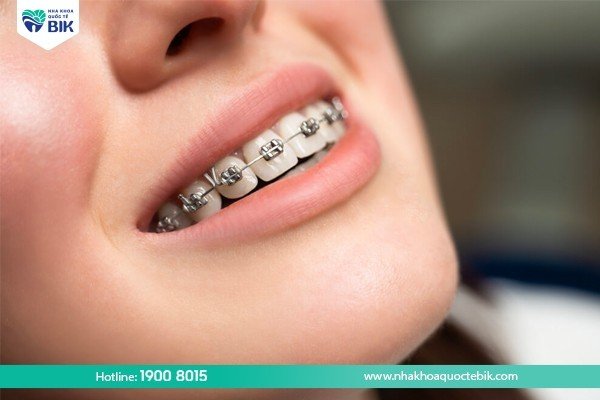
In fact, there are still many cases where braces for buck teeth do not require tooth extraction but can still achieve the desired results. In that case, the doctor will take some measures such as jaw expansion or tooth grinding so that the teeth can move to the correct position.
Cases where braces for buck teeth do not require tooth extraction can be listed as follows:
– Spaced teeth: In cases where the teeth are far apart on the jaw, there is still enough space to move, so tooth extraction is not necessary.
– Wide jaw arch: A wide jaw arch means that the teeth still have space to move according to the doctor’s schedule.
4. International standard braces procedure for buck teeth
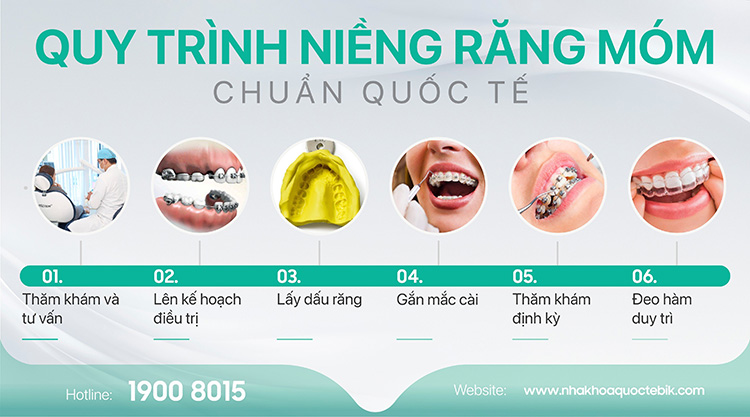
The international standard braces procedure usually includes the following basic steps:
4.1. Examination and consultation
First, the doctor will conduct a general examination of the customer’s current oral condition with the naked eye. Then, an X-ray will be taken to know exactly the jawbone structure as well as determine the specific cause of buck teeth. From there, the doctor can advise on the appropriate braces method for each person.
4.2. Treatment planning
After the patient has chosen a treatment method, the doctor will begin to plan a clear and specific treatment. If the customer has Invisalign clear braces, they will watch a 3D video simulating the process and the final braces results are predicted by the exclusive Clincheck software.
4.3. Taking dental impressions
After that, the customer will have their teeth impressions taken using specialized materials and tools to serve the design of Invisalign clear braces or aligners.
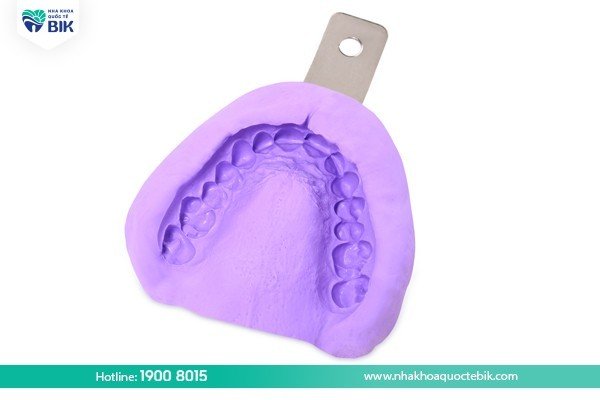
4.4. Attaching braces
After the orthodontic appliance has been fabricated, the doctor will schedule the patient to visit the dentist to permanently attach the braces to the teeth. For customers who choose Invisalign clear braces, they will be given specific instructions on how to wear the clear trays.
4.5. Regular check-ups
On average, every 5 to 6 months, the patient will have to visit the dentist once for the doctor to examine and adjust the tightening force of the braces as well as check the progress of the braces.
4.6. Wearing a retainer
After the teeth have moved to the correct position and the underbite has been corrected, the patient will have the braces removed. After that, the patient will have to wear a retainer to ensure that the teeth do not shift and return to their original position.
5. Which teeth are usually extracted for braces for buck teeth?
If the case of buck teeth is indicated by the doctor to extract teeth for braces, the extracted teeth are usually the following teeth:
5.1. Extracting tooth number 4
Usually, most cases of tooth extraction for braces for buck teeth are usually tooth number 4. This tooth is located in the middle of the jaw, not too large or too small in size. In addition, this is just a premolar tooth, not responsible for the main chewing function, so when it is removed, it will not have much impact.
5.2. Extracting tooth number 5
Like tooth number 4, tooth number 5 is also a premolar tooth that does not have a very special role in the chewing process. In addition, the position of tooth number 5 does not have much contact with the nerve, so it limits the condition of the facial nervous system being affected or damaged when removed.
5.3. Extracting tooth number 8
Tooth number 8, also known as wisdom tooth, is quite large in size, this type of tooth will grow together with the jaw bone. Based on each specific condition, the doctor will indicate whether to extract the wisdom tooth to help the treatment process achieve high efficiency.
6. Does braces hurt?
The nature of braces is to use tightening force on the teeth to move them to the correct position on the jaw, effectively correcting the condition of buck teeth as well as some other problems with teeth and bite. Therefore, the feeling of pain when braces is inevitable, but the amount of pain will depend on each person’s constitution.
Usually, the patient will feel the most obvious pain when they first start wearing the device or when they go to the dentist to periodically adjust the tightening force as prescribed by the doctor.
In addition, the method of braces also affects the level of pain during treatment. Metal braces will create a strong tightening force to help the teeth move to the desired position quickly, while clear braces will create a gentle and continuous force to limit pain for the patient.
In addition, braces at the ideal age will also reduce the pain significantly because it does not require too much force to impact the teeth.
So whether braces for buck teeth have teeth extracted or not depends on each specific case. If the teeth are not extracted, the doctor will take other measures to ensure the effectiveness of orthodontics. To know exactly whether teeth need to be extracted or not, customers can go to BIK International Dental Clinic to be examined and specifically consulted by a specialist.

